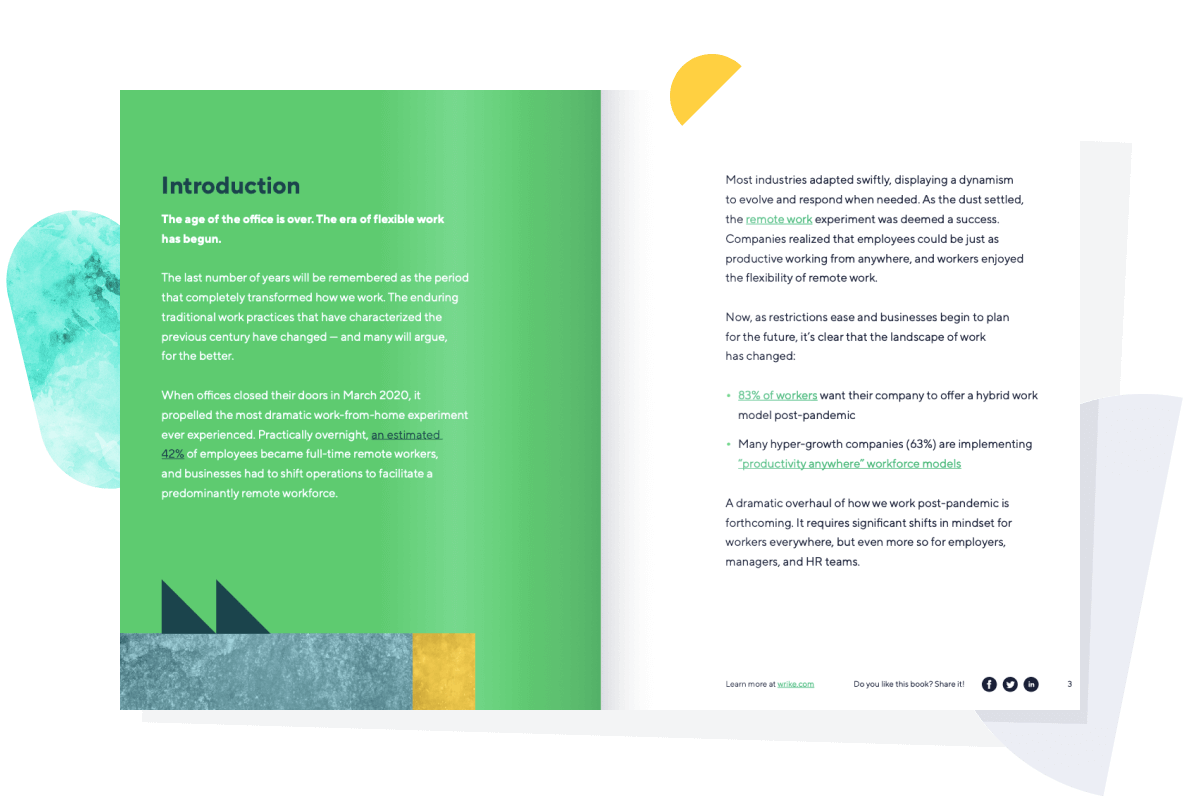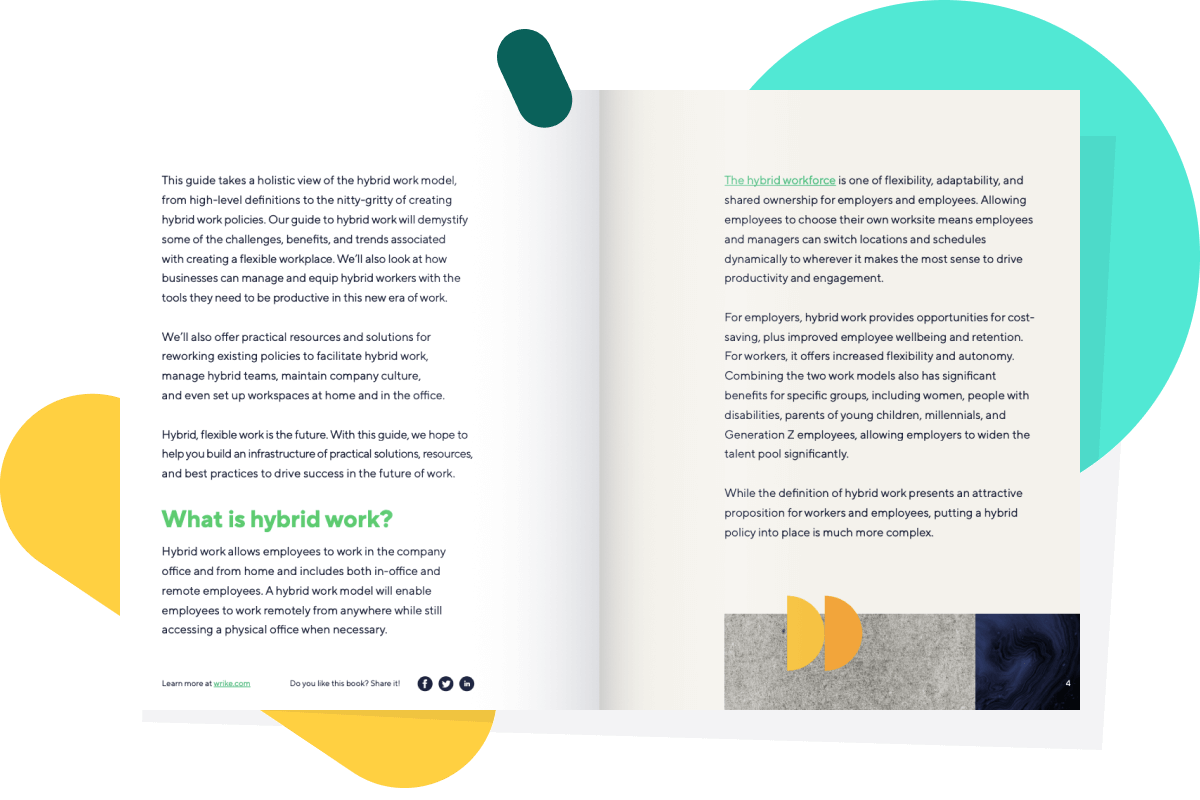Building Flexible Workplaces:
A Definitive Guide to Hybrid Work
Enable a flexible workforce with our hybrid work guide
How we work post-pandemic requires significant shifts for employees and employers. This guide takes a holistic view of the hybrid work model and how to create hybrid work policies. Our guide to hybrid work clarifies flexible work for your teams.

What's in the eBook
- What is hybrid and why is it the future of work?
- The benefits and challenges of a hybrid work model.
- Practical advice on how to enact a hybrid policy.


Become more productive with Wrike

